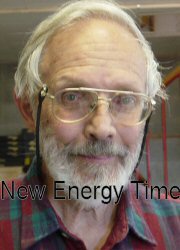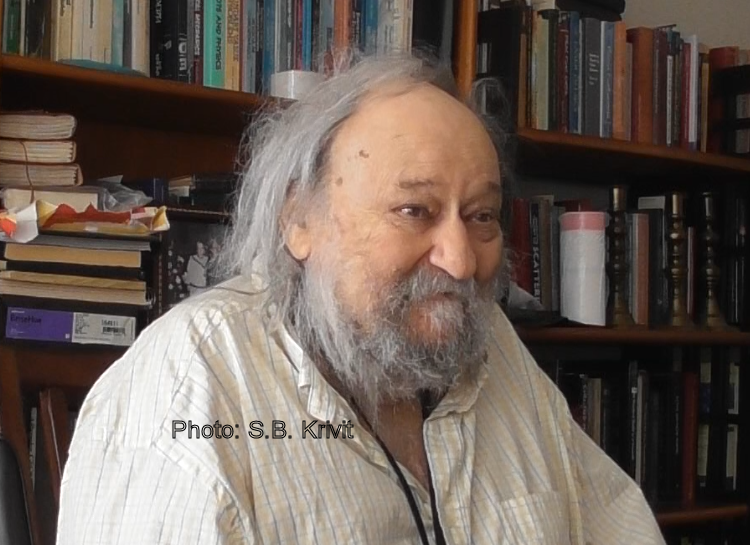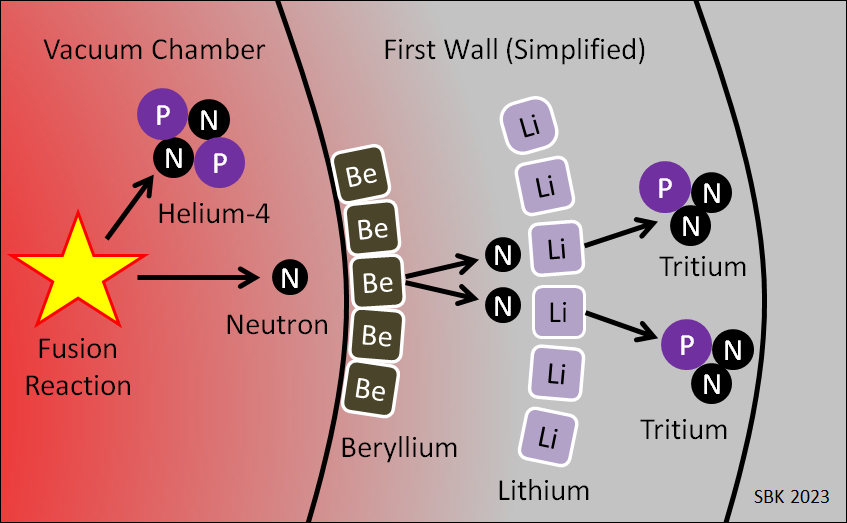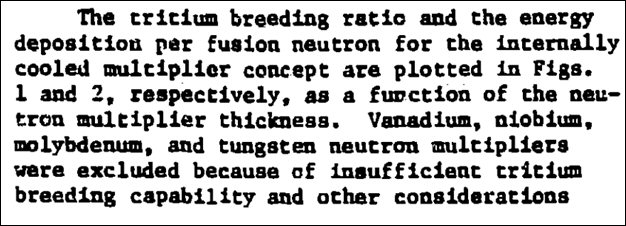
Edmund Storms
Nov. 4, 2023 (Revised Nov. 19, 2023)
By Steven B. Krivit
Science, some people say, is the dispassionate, objective pursuit of nature’s truths. Though that may be the ideal, in reality, scientific exploration — particularly where its practitioners break new ground — is anything but objective. In such cases, the discussion is often accompanied by, to use the words of German philosopher Arthur Schopenhauer, “violent opposition.” We may not see the adversity manifest literally in the physical, but instead, sociologically. The following is an account of one such case. It is one that I, as a writer, and as a person who has chosen to support a novel idea, had also become a target of its opposition.
On Aug. 31, 2023, I gave a lecture on the basic concepts of the Widom-Larsen theory of low-energy nuclear reactions (LENRs) at the ICCF-25 conference in Szczecin, Poland. The conference was originally called the International Conference on Cold Fusion, but now the acronym represents the International Conference on Condensed Matter Nuclear Science. I will soon be publishing a video of my presentation, along with detailed responses and follow-up discussions that I have since had with several people who were at the conference.
It is my opinion that the theory is the best available explanation for LENRs. I have encouraged people to consider this theory since 2006. According to the Widom-Larsen theory, LENRs are a neutron-mediated reaction, not a fusion-based reaction. Allan Widom and Lewis Larsen published the first paper of their series (see the WL Portal) in European Physical Journal C – Particles and Fields on March 9, 2006, after submitting it to the arXiv preprint server on May 2, 2005.
Widom and Larsen were not the first theorists to suggest that LENRs are a neutron-mediated reaction, but their explanation is more complete than any prior neutron explanations for LENRs. This includes ideas proposed by Mitchell Swartz, Peter Hagelstein, Hideo Kozima, John Fisher, George Anderman, Lali Chatterjee, Tadahiko Mizuno and Yasuhiro Iwamura.
In 2008, Fisher was one of the few scientists in the LENR field who had the courage to speak openly and critically against the majority of scientists in the LENR field who espoused some kind of deuterium-deuterium “cold fusion” mechanism:
In my opinion [LENR] has been crippled by wide acceptance of the belief that deuterium fusion of some sort is responsible for energy generation, and also by rejection of alternative [proposed] mechanisms. Progress is stunted when we reject a mechanism, because we then fail to undertake the experiments it suggests.
Why This Is Important
Theoretical guidance is essential for experimenters in the field of low-energy nuclear reactions (LENRs). For instance, they need to know if normal hydrogen-nickel systems are viable, or if only deuterium-palladium systems should work. They also need to predict the outcomes of control experiments with normal hydrogen. The Widom-Larsen theory, even if it turns out not to be fully correct, is a valuable contribution to LENR research. It has supported the efforts and achievements of researchers who have focused on normal hydrogen-nickel systems, as they demonstrated at ICCF-25. The Widom-Larsen paper is a citable reference to a possible viable explanation for LENRs, a common demand made by journal peer-reviewers.
Chilly Reception
My enthusiasm for the theory has not been widely shared among people in the field. Why would bona-fide scientists be so tenaciously attached to the “cold fusion” concept? That is a complex and intriguing question that goes beyond the scope of this article. What I can say for sure is that “cold fusion” has a cultural resonance. It has inspired movies, software, music and even ice cream. It is a cool and catchy term. But this should not distract us from the scientific hurdles that this new field faces to gain credibility and acceptance.
Most Vocal Opponent
Throughout these 18 years, one person more than anyone else has tried to discourage people from paying attention to this theory. But this person, Edmund Storms, is not an outsider or an opponent to the field. Rather, Storms is one of the most knowledgeable proponents of LENRs and has made significant contributions as an experimentalist and author.
For nearly two decades, I have tried to educate and inform people about the theory while Storms has tried to convince people that the theory violates fundamental laws of science and is fatally flawed. I have never found his arguments to be compelling. It is time that I explain why.
The “Cold Fusion” Hypothesis
The specific objections by Storms, as I will explain, do not hold up under careful scrutiny. In light of this, it is reasonable to ask what would compel Storms to have run such a long, heated course of opposition to the theory. As far as I can tell, the underlying reason is that the theory casts serious doubt on the “cold fusion” hypothesis, which encompasses a number of assertions and beliefs:
- That two nuclei of heavy hydrogen, called deuterium, undergo nuclear fusion at high rates at room temperature.
- That the dominant nuclear product is helium-4 and that all other nuclear phenomena in LENRs are a side issue.
- That all other nuclear phenomena produced in LENRS, except helium-4, are produced with little-to-no associated energy release.
- That LENR experiments that produce isotopic shifts and heavy-element transmutations must be the result of some other nuclear mechanism besides “cold fusion” — or the result of contamination or experimental error.
- That LENR experiments performed without deuterium that give positive results of excess heat or nuclear products must be the result of some other nuclear mechanism besides “cold fusion” — or the result of experimental error.
This list should also illuminate the underlying cause for the internal disputes in the first two decades of the field wherein researchers working in the heavy-hydrogen system cast specious doubts and uncertainty on the results of their colleagues working in the light-hydrogen system.
Following the Data — Or Not
Every year since 1989, the experimental evidence has chipped away at this “cold fusion” hypothesis. That assumption was layered on top of mostly scientifically credible experimental evidence. But, as the years went by, rather than revising their hypotheses, scientists who believed in “cold fusion” began to revise the definition of fusion. Shockingly, one highly respected scientist in the field even revised his data to fit the “cold fusion” hypothesis.
Storms’ efforts to promote the “cold fusion” hypothesis show up vividly in a 2010 peer-reviewed paper called “Status of Cold Fusion 2010.” After I read his paper, I saw that Storms had used two fundamentally flawed arguments to support his “cold fusion” thesis. These flaws constituted misrepresentations of the science, and, in the interests of accuracy for the scientific record, I submitted a response to the same journal, refuting his two central points. It went through peer-review, and was accepted for publication.
Storms did not attend the recent conference in Poland where I spoke. As a result, I did not have the chance to directly engage with him about the Widom-Larsen theory. I will do so now.
Background of Widom-Larsen Theory Conflict
At the time Lewis Larsen and Allan Widom published the first preprint of the theory in 2005, Storms, an experienced radiochemist, had worked for Larsen for several years. He had performed experiments for Larsen’s company. Many years before that, Storms had worked at the Los Alamos National Laboratory. He retired from the lab soon after he began “cold fusion” experiments at the lab and publicized them in newspapers.
When I began reporting on the Widom-Larsen theory, other theoreticians in the field were not pleased. I had never reported about any LENR theory in New Energy Times. Theorists, I learned, are a different breed from experimentalists. Experimentalists are almost always trying to replicate and confirm one another’s work. Theorists are almost always competing against one another. In my experience, they each think that their theory is right and that all the others within the domain are wrong. My choice to give attention to the Widom-Larsen theory unintentionally stimulated conflict and envy.
Since 2005, only a few LENR theorists have published formal comments about the Widom-Larsen theory. I will be discussing some of these in a forthcoming video. But, to my knowledge, Storms has never published a formal paper that discusses what he thinks is incorrect about the Widom-Larsen theory.
Storms’ most specific comments about the theory appear in two publications. Just one page in his chapter “How to Explain Cold Fusion?” in a book I co-edited for the American Chemical Society in 2008, discusses the Widom-Larsen theory. Just half a page in his book The Science of Low-Energy Nuclear Reaction discusses the theory.
On the other hand, Storms has been extremely active in his direct conversations with people, in the news media, and in Internet discussion lists, telling people that the theory is wrong:
When people examine this theory carefully and see its obvious flaws, the field is going to look silly in supporting it. … The more publicity this theory gets and the more support [Widom and Larsen] get based on the theory, the bigger the fall will be in the future when people wise up.
Former Mentor
Until I developed an interest in the Widom-Larsen theory, Storms and I had an excellent professional relationship. He had consistently been generous with his knowledge and had offered what seemed to be useful advice to me many times as a new writer about the LENR field. He was the first person I interviewed in the field. For some time, I even regarded him as a mentor. As such, I had invited him to be a member of my nonprofit organization’s board of directors, and he had accepted. But the Widom-Larsen theory changed all of that.
In 2006, Lewis Larsen had told me that Richard Garwin, a world-famous physicist and former arch-critic of “cold fusion” had read the first paper in the Widom-Larsen series. In February 2007, I met Garwin at the American Association for the Advancement of Science (AAAS) meeting in San Francisco. Garwin confirmed to me he that he had read the paper.
Garwin has never been hesitant to point out an error — or even suggest a remotely possible error — in LENR research. So I asked Garwin what he thought was wrong with the theory. He complained to me that the Widom-Larsen theory did not explain their gamma suppression mechanism. (He was correct in that observation, but Widom and Larsen did explain it in a later paper and patent.) Aside from that, Garwin insisted on making sure that I knew that he didn’t say the theory was wrong.
I was impressed that Garwin had not identified any fundamental flaws with the theory. Storms was not.
Storms vs. Garwin
In 2007, I told my board of directors, which included Storms, about my conversation with Garwin. Storms wrote back, “The Widom-Larsen theory is wrong for many reasons. I would not pin any advantage to cold fusion on it.”
Despite my regard for him as a mentor, I pushed back and asked Storms to support his assertions: “I need to explicitly know what is wrong with the WL theory.” The response I received from him lacked details and contained just another set of absolute statements. I realized I needed other opinions. I sent out a survey to a list of LENR researchers. Among the responses, I received this response from Storms:
As you know, I commented on this theory in my book and in the paper I submitted to the ACS proceedings. The theory is so out of contact with reality that I’m surprised that it has gotten any attention at all. Apparently, it is an example of people accepting anything that is stated with sufficient conviction, as is the Larsen and Widom style in their papers. Because it violates basic concepts and ignores accepted data, many of the detailed questions you ask are irrelevant. Nevertheless, perhaps the answers you obtain will finally eliminate this distraction. [emphasis added]
Storms’ absolute conviction that the theory was wrong was a peculiar juxtaposition to Garwin’s response. The nature of Storms’ response reminded me of Garwin’s response in 1989 in Nature magazine to the announcement by Martin Fleischmann and Stanley Pons:
Large heat release from fusion at room temperature would be a multi-dimensional revolution. I bet against its confirmation. … Somebody is going to have to eat his hat.
Storms took a number of steps to discourage me from writing about the Widom-Larsen theory. When I continued to publish news articles on the theory, Storms resigned from my board of directors because I was not following his advice.
Three Proclamations
Storms had given three broad proclamations about the Widom-Larsen theory: 1) it is out of contact with reality, 2) it violates basic concepts, and 3) it ignores accepted data. I asked Storms for details to support these assertions.
Storms’ Book
He first sent me an excerpt from his book The Science of Low Energy Nuclear Reaction:
Widom and Larsen (Northeastern University and Lattice Energy, LLC) attempt to explain neutron induced transmutation by proposing a series of events, starting with formation of super-heavy electrons on an electrolyzing surface. These electrons make “cold” neutrons by combining with protons or deuterons. Next, the very low-energy neutrons or dineutrons are proposed to react with elements (seeds) that are present and generate a range of transmutation products. The authors propose that the expected gamma radiation is absorbed while super-heavy electrons are present, thereby accounting for the absence of radiation from the expected (n,g) reactions. They do not explain why gamma radiation is not detected once the super-heavy electrons stop forming. Yet previously made neutrons would continue to react and produce a decay chain of beta-gamma emitting isotopes. Observed behavior can only be explained if the half-life for super-heavy electron loss after production stops exactly matches the half-life for beta-gamma decay of the resulting radioactive isotopes, a very unlikely coincidence. [emphasis added]
They claim a match exists between a calculated cross-section for low-energy neutron capture and the distribution of elements reported by [George] Miley. Based on the model, addition of neutrons to the seed and to all resulting isotopes would have to be extremely rapid so that only radioactive beta emitters of very short half-life are present in the sample. Presumably, these isotopes decayed away to produce the measured element distribution without their radiation being detected. Absence of detectable radioactivity after such a process is very unlikely. The NAE for this model would be the environment required to create the super-heavy electrons. [emphasis added]
Analysis
Each of these paragraphs contained a specific concern. However, nothing in either paragraph supported Storms’ three assertions.
The Widom-Larsen theory did not need to explain, as Storms complained, “why gamma radiation is not detected once the super-heavy electrons stop forming.” The first reason is that the long history of LENR experiments tells us that very little and very low-energy gamma radiation is emitted during or after experiments.
In 1996, nuclear chemist Thomas Passell, who had studied under Glenn Seaborg at University of California Berkeley, remarked about this profound characteristic, “the almost complete absence of radioactivity in palladium and nickel cathodes which have apparently produced excess heat.” Passell was puzzled as to why only stable isotopes were produced in LENRs along with excess heat. Larsen addressed Passell’s question in a quote published in my book Hacking the Atom:
There are unstable products produced in LENR transmutation networks. However, these intermediate products are not observed because, being typically very neutron-rich, their half-lives are quite short, normally ranging from tens of minutes down to milliseconds. Instead, they transmute in a very rapid, sequential series of beta decays that I call a ‘beta-decay cascade.’ The end-products of these fast cascades are stable isotopes, which can be observed at the end of an experiment. This is why LENR systems do not typically produce large quantities of medium-lived radioactive isotopes with problematic half-lives, as commercial fission reactors do.
Storms’ ACS Proceedings Chapter
The second set of excerpts that Storms sent me was from the proceedings of the paper Storms gave at the American Chemical Society meeting in 2007:
A mechanism has been suggested recently by Widom and Larsen based on a series of especially extraordinary assumptions, as follows:
- Energy provided by the voltage gradient on an electrolyzing surface can add incrementally to an electron causing its mass to increase. This implies the existence of energy levels within the electron able to hold added energy long enough for the total to be increased to 0.78 MeV mass equivalent by incremental addition. This idea, by itself, is extraordinary and inconsistent with accepted understanding of the electron. [emphasis added]
- Once sufficient energy has accumulated, the massive electron will combine with a proton to create a neutron having very little thermal energy. This implies that the massive electron reacts only with a proton rather than with the more abundant metal atoms making up the sample and does not shed energy by detectable X-ray emission before it can be absorbed.
- This cold neutron will add to the nucleus of palladium and/or nickel to change their isotopic composition. This implies that the combination of half-lives created by beta emission of these created isotopes will quickly result in the observed stable products without this beta emission being detected.
- The atomic number distribution of transmutation products created by this process matches the one reported by Miley after he electrolyzed Pd + Ni as the cathode and Li2SO4+H2O as the electrolyte. This implies that the calculated periodic function calculated by the authors actually has a relationship to the periodic behavior observed by Miley in spite of the match being rather poor. In addition, residual beta decay has not been detected. [emphasis added]
- Gamma radiation produced by the neutron reaction is absorbed by the super-heavy electrons. This implies that the gamma radiation can add to the mass and/or to the velocity of the super-heavy electron without producing additional radiation. In addition, to be consistent with observation, total absorption of gamma radiation must continue even after the cell is turned off. If this assumption were correct, super-heavy electrons would provide the ideal protection from gamma radiation.
Storms summarized his points as follows:
These assumptions are not consistent with the general behavior of the LENR phenomenon nor with experience obtained from studies of electron behavior. Indeed, these assumptions, if correct, would have extraordinary importance independent of cold fusion.
Analysis
In Storms’ point #1 he asserted that the electron mass renormalization process was “inconsistent with accepted understanding of the electron.” He did not cite any support for his assertion. But such renormalization is actually an old idea, described in the scientific literature by world-famous physicists including Lev Landau (1908-1968), Lev Pitaevskii (1933-2022), Vladimir Berestetskii (1913-1977) and Evgeny Lifshitz (1915-1985). Widom and Larsen provided the citations in their first paper.
Storms’ points #2 and #3, despite his evocative language of “extraordinary assumptions,” did not support his three assertions.
Storms’ point #4 was ambiguously worded because he stated that the distribution of transmutation products described by the Widom-Larsen theory “matches the one reported by Miley”; then he stated that the distribution observed by Miley was a “poor match.” His more significant point was that residual beta decay had not been detected and that, if the theory was correct, beta emissions should have been detected.
I had specifically discussed this objection with Larsen. He had agreed that beta emissions would be present during and shortly after the reactions stop. However, he pointed out that detecting beta radiation would be extremely difficult because it is easily stopped by intervening materials, such as the epidermis or water in an electrolytic cell. Larsen said that a special type of radio-sensitive film would need to be used. In fact, he purchased some of this film and sent it to Storms and asked him to search for betas.
“I wanted him to take the cathode out of the solution, dry it off, and then immediately clamp the film right on top of the cathode, and leave it in the dark for a week,” Larsen said. “But Storms refused to do the experiment. He was afraid he would see the betas.”
In Storms’ point #5, he asserted that the patches of heavy electrons, as described by the theory, must continue to absorb and convert the gamma radiation after the cell is turned off. Storms does not appear to have published any details to support continued gamma radiation after the termination of LENR experiments. In addition, a problem exists in that the experimental database shows that LENRs produce none-to-negligible gamma emissions after termination of experiments.
Breakdown
The divisiveness between Storms and Larsen led to a breakdown of their productive relationship. Their disagreement about the theory precipitated Larsen’s termination of Storms’ employment in early 2006, as Storms explained to me.
“That set the stage for his decision to fire me,” Storms wrote. “He was not interested in an honest and objective critique.”
When Storms failed to convince me to stop reporting on the theory, he resorted to defamation, falsely accusing Larsen and Widom of defrauding investors:
Eventually, people will realize that the theory makes no sense and this should have been known by Widom and Larsen from the beginning. Therefore, they will appear to be either incompetent or can be said to have used a theory they knew was wrong to raise money. The more publicity this theory gets and the more support they get based on the theory, the bigger the fall will be in the future when people wise up. Therefore, it is best to treat it with the same indifference that is given to other theories. Of course it should be discussed, which I do in my book and in the ACS paper. [My] discussion [with myself] gives the scientific basis for rejection. Any further discussion should address these scientific objections. Perhaps you can answer this question. This theory is not any more correct or useful than many other theories that are not discussed. Why is this one given special attention?
I have chosen to publish this false and defamatory comment from Storms in the hope that it is unambiguously clear that it is completely devoid of merit. My first objective in publishing it is to illustrate the character attacks that happened publicly and behind the scenes against Widom, Larsen and the few people like myself who initially paid attention to the theory. Another objective is to inform the public, members of the science community, and specifically the LENR community, of the hostile opposition we faced as we endeavored to ensure that they had the opportunity to learn about the theory. There is one other person in the field, David Nagel, who initially promoted the Widom-Larsen theory but retreated from doing so soon after Storms began his efforts to discredit the theory. Nagel has declined to comment on the record about his retreat.
For readers who know nothing else about Widom, Larsen, or their theory, and wonder whether there is any truth to Storms’ allegation that Widom and Larsen proposed a “theory they knew was wrong,” I would like to point out two things.
First, Storms’ assertion that Widom and Larsen knew their theory was wrong is ludicrous. It is obvious that Widom and Larsen were convinced that their theory was right. Anybody who spoke with them or read anything they published knew that they thought their theory was right. Every theorist thinks their own theory is right.
Second, Storms had attempted to discourage me, the public, and people involved in the field, from doing exactly what he didn’t want us to do: pay attention to the theory. He did not offer any constructive criticism but instead resorted to personal attacks and false accusations. Concurrently, he proposed his own mechanism which he even admitted “requires a leap of faith.”
Group Attack
Of course, Storms was not the only LENR scientist who ganged up against Widom and Larsen. In 2008, Scott Chubb, a competing LENR theorist, told me that Widom and Larsen were unethical because they didn’t cite Martin Fleischmann and Stanley Pons in their paper. Another competing LENR theorist, Andrew Meulenberg, wrote this in 2008:
We see a disaster, if this paper were to be published and acclaimed by [the LENR field]. It would certainly confirm most physicists’ view of the field. Mostly, [physicists] looking for flaws would read it. They would easily find and advertise them. Good equations, grand phrases, and authoritative references (some of which seem misapplied and/or contradict the intent of the paper) do not make an acceptable paper. … Our instincts said there was a serious problem. Our weakness in QED suggested that we weren’t “up to it.” We finally saw the “emperor’s new clothes.” There was no solution in the QED. It looks like a snow job. And that makes us wonder why/how it was done.
Larsen died in 2019, but Storms continued the defamation, falsely accusing me of violating fundamental ethics and principles of journalism by taking money from Larsen. Storms wrote, without any evidence that Larsen funded me, (because there is none):
Lewis Larsen funded both Krivit and Widom because they supported the Widom-Larsen theory. The Widom-Larsen theory has been rejected in numerous publications. It is so far from reality, both with respect to LENR as well as basic science, that it is an embarrassment.
Storms’ comment that Larsen funded Widom because he “supported” the Widom-Larsen theory is also ludicrous. Widom did not accept funding from Larsen to be a promoter; rather, Larsen paid Widom to work on and develop the theory with him.
Attempt to Block
In 2023, Storms even protested to the LENR community that the organizers of the 2023 ICCF-25 conference had provided me the opportunity to speak about the theory. He posted a series of messages to an email list of LENR researchers between July 29 and Aug. 7, 2023. Here are some excerpts:
Instead of this flaw in this theory [that I identified] being acknowledged by the leadership, [Krivit] is given time at ICCF-25 to again promote this failed explanation. … This theory is so bad it should never have gotten any attention. This happened because Krivit made an effort to distort what was being claimed. … This issue would not be important except that this theory is being given attention at ICCF-25. This demonstrates to everyone that the [ICCF] leadership does not know what is real and what has been demonstrated to be nonsense. … No other theory has been demonstrated to be as wrong as this one, yet it is featured at a major conference. WHY?? … The W-L theory is especially embarrassing because many less-educated administrators accepted the idea only to discover that it is based on what can be called intellectual fraud. Now that fraud, [the Widom-Larsen theory], continues to be promoted at a major conference. … I hope the organizers of ICCF-25 can justify their decision.
Meulenberg, to his honor and credit, promptly rebuked Storms’ implication that the ICCF-25 organizers should have blocked me from speaking:
While we might all consider the W-L theory to be multiply flawed, to block its presentation at ICCF-25 entirely would be as unconscionable as the major journals blocking CF papers. … I hope that Krivit and his presentation are treated courteously at the conference.
I am pleased to say that I was treated courteously by the members of the field who were present in Poland in August.
Summary
Writing objective rebuttals to critiques or complaints about proposed theories consumes a lot of time and effort. That’s one of the reasons why Widom and Larsen confined their rebuttals to only a select number of critiques published in reputable journals or arXiv. Storms never published a formal paper commenting about the Widom-Larsen theory; thus, they saw no reason to respond to his Internet postings.
Storms’ lack of substantive criticism of the Widom-Larsen theory may have gone unnoticed by people who are not well-versed in LENR science or the basic principles of the Widom-Larsen theory. His proclamations that their theory was wrong might have influenced many casual observers. However, my analysis shows that Storms’ objections to the Widom-Larsen theory are feeble and lack scientific basis or validity.
Storms had a lot of experience and knowledge in the broader field of LENR research, but he failed to apply this to the Widom-Larsen theory. As a respected authority in the LENR field, his actions and statements must have discouraged others from exploring the possibilities of the theory. In my mind, there is no question that Storms’ assault on the Widom-Larsen theory interfered with the progress and development of LENR research.
It took some time for me to develop a strong foundational understanding of the basic concepts of the theory. However, early in my attempt to encourage public discussion about it, I recognized something. It is a point that I hope to convey to every participant in the LENR research field. The nature of the responses to Widom and Larsen from the politically prominent scientists within the field were similar to the nature of the responses to Martin Fleischmann and Stanley Pons from the politically prominent scientists in 1989.
LENR theorist Peter Hagelstein, an associate professor of electrical engineering at the Massachusetts Institute of Technology, wrote a critique in 2013 about the Widom-Larsen theory. Even though Hagelstein’s objective was to discredit the theory, he wrote:
Widom and Larsen have put forth a model to describe excess heat and transmutation in LENR experiments. This model is the single most successful theoretical model that the field has seen since it started; it has served as the theoretical justification for a program at NASA; and it has accumulated an enormous number of supporters both within and outside of the condensed matter nuclear science community.
Note: On Nov. 19, 2023 we added additional content to the “Breakdown” section and the sections after that.







